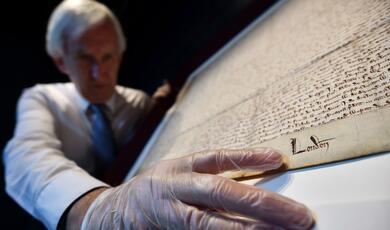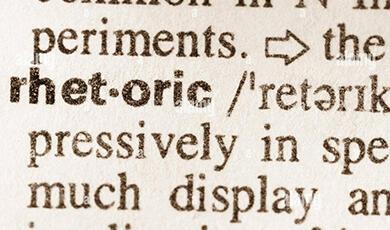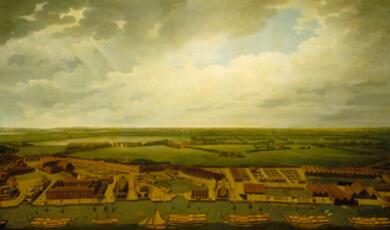Mary Rose: The first Ship of our Standing Navy
Share
- Details
- Text
- Audio
- Downloads
- Extra Reading
2009 marks the 500th anniversary of the Mary Rose, the only 16th century warship on display anywhere in the world. She was a revolutionary build, and one of the first ships able to fire a broadside. After a long and successful career, she sank accidentally during an engagement with the French fleet in 1545. Her rediscovery and raising were seminal events in the history of nautical archaeology.
Download Text
MARY ROSE: THE FIRST SHIP OF OUR STANDING NAVY
Rear Admiral John Lippiett
It is on April 21st this year that we will be celebrating Henry VIII coming to the throne, at seventeen years old, and he changed our country radically. The first thing he did was to order to be built the Mary Rose and another ship called the Peter Pomegranate. To anticipate the question about this other ship, Peter was St Peter, Pomegranate was Catherine of Aragon's family crest, and so 'Mary Rose' is probably the Virgin Mary, although custom has it that it was his favourite sister Mary, and the rose the Tudor Rose.
The Mary Rose was a revolutionary as a ship. When it was built, in 1509, with its maiden voyage in 1511, it was as scientifically advanced as the space shuttle was in the 1980's. It has a new form of construction for warships in this country. For the first time, we have got a ship that is smooth-sided, that is carvel-built with planks abutting each other to give a smooth side, as opposed to clinker-built, which is where the planks overlap. Carvel ships were built from the keep up and the planks were just laid on top of each other. For the first time, this was building a ship with frames and then putting the planks around it. It was 150 feet long and it was a mighty warship with castles at the stern and bow, the aftercastle and the forecastle (you will probably know that forecastle is now abbreviated to 'focsle' of a ship). In years before, if they wanted to go to war, monarchs would hire merchant ships and they would put castles on them to go off to sea and fight, or transfer anyway troops across to France, where we did most of the fighting. Those castles were kept around the Cinque Ports and so on; they were in flat-packs, rather like IKEA kits, and they would be put on for war, then taken off, and the ships would go back to being trading ships. But here, Henry VIII has built the castles into a ship, in the Mary Rose, for the first time, and big and mighty castles they are. For quite a long while, we thought that the Anthony Anthony Roll had completely exaggerated the height of those castles, but now, from documents and other evidence, we have actually worked out that it is more then likely to be correct. They had got great height in them in those days, because we found they had another gun deck above the one we had originally thought.
An advantage of the ship's revolutionary carvel-built design was that they were able to cut holes in the ship's side. Because they were smooth-sided, they could cut holes in and put a port on it to close it down and make it watertight, and so this was coming in during his reign. This meant that they were able to have gun-ports below the deck of the ship. The number of these gun ports were increased throughout Henry VIII's reign as more and more holes were cut into the side of the ship.
We know a lot about the Mary Rose because of the Anthony Anthony Roll, which is now in Magdalen College if anyone needs to see the original. Anthony Anthony was Clerk of the Royal Ordinance in the 1540s, and he drew every ship of Henry's Navy. In his picture of Mary Rose, he gives an inventory, in effect, of the gunpowder, shots of iron, shots of stone and lead, and so on. Also, in manpower terms, he lists something like 180 sailors, 30 gunners, 200 soldiers, and 17 servators and trumpeters, which I rather like! He does not mention how many officers; he does not mention how many in the retinue and so on of the Admiral and so on on board. We have found documents in the last year that showed, in 1545, she had 600 people on board, so there were an awful lot of people. This is the size of a minesweeper of a modern Navy, 150 feet long, and a minesweeper would have about thirty people, so just imagine how they were crammed on board in those days - it really is extraordinary!
She is listed in this document as weighing about 500 tons. Tonnage in those days was a rather vague term anyway. Later accounts say 700 tons, so it varies quite a lot. In measurement terms, a ton was a barrel, and because ships were used for importing wine from France and Portugal, the ton was how many barrels a ship could carry to bring it back. Interestingly, there was a tax on each ton of wine, which had been going on for centuries prior to this.
From the Anthony Anthony Roll we can see her in her full four-masted, carrack build glory. Her front two masts are square rigged, as you would see in the Victory and so on later on. The after two masts are actually lateen masts, triangular sails, so you have actually got the equivalent of the Norse longboat, square-sail, in the front two sails, and the Mediterranean dowel shape sail on the after two masts.
The guns on board, at the start of the reign, were wrought iron guns, long strips of iron, and then bound by hoops, just as they made barrels, and we call it the barrel of the gun for that reason. They had breach chambers at the rear end, into which gunpowder was packed. Those breach chambers were then put onto this wooden sledge and effectively dovetailed into the cannon, with the stone cannonball hand-chipped. A wedge was put in and it was fired. The cannonball would rattle out, if it did not explode in the first place and kill the gun crew. It would go about 200 yards, it would scare the enemy, it would scare the people on board, there would be a lot of noise, there would be a lot of smoke, and it probably did little more than that. But during the reign of Henry VIII, it began to change.
There were great contrasts in the ship at the time. Low down aft, was the gunroom, where you would have stayed were you a junior officer. In contrast, the Admiral lived in the upper quarters, with the captains and then the officers. It is also important to recognise how decorated the ship were, in particular the castles, because this shows the function of the ship was not simply to do battle, but also it was about the grandness, the show, the magnificence, and these ships were built to impress. They were not just built as utility ships. This was Henry showing how powerful he was. This was Henry showing 'I am going to take on Europe, I am going to fight you, and I am very rich and very important.' I think it was £800 that he spent on just the flags and bunting for the commissioning of Mary Rose back in 1511. That was an awful lot of money in those days, and it shows how important that sort of grandness was.
Later on in the reign, they went from having those wrought iron guns with stone cannonballs, to founding bronze calverine guns. Henry himself was involved in the technology, and as technology increased and improved, so he was able to import it from Holland. The Dutch people were able to found guns and set them up in Houndsditch, where they actually then taught the English how to do it. At the Mary Rose Museum in Portsmouth, we have the original guns, although most are currently in conservation at the moment, and they show a wonderful level of architectural detail on them. There is a lovely little inscription on one of them, which says: 'Robert and John Owen, Brethren of the City of London, Sons of an English, made this bastard, Anno Domini 1531'. It is called the Bastard Calverine because any gun that was not an exact size in those days was called a bastard. The school kids who visit our museum love that fact!
In Henry VIII's day, we are at the forefront of experimenting with technology and taking things on. The first cast iron guns were in mass production at this time, having only just been invented. They are about a metre long and they are called hailshot pieces. Anthony Anthony Rolls says there were twenty of them on board. They sprayed iron dice, tiny little sort of half-inch iron dice, around to kill people. They weigh an awful lot, and they were mass produced, but the imperfections in the castings meant that at this stage, in Henry's time, they daren't cast a much bigger one because when they tried it, they would explode and kill the gun crew. So these smaller ones were cast iron from those days.
To move ahead, the Mary Rose fought three wars against the French and one against the Scots. In 1512, the one against the French, the Admiral on board, Sir Edward Howard, led a boarding party from the Mary Rose and boarded a French ship but was killed, so that was not very successful. He was relieved by Sir Thomas Howard II, his elder brother, who was then the Lord High Admiral for some long time after that. He was more political and less of a war fighter, I have to say, so he was a bit more cautious, and then handed over to other Lord High Admirals, and so on. We know an awful lot about the ship because the Admirals would write to the King, the King would write to the Admirals, the Admirals would write to Wolsey, and those letters exist in state archives. In fact, there is a wonderful book called Letters from the Mary Rose. So we know what was on their mind; we know that the Admiral was writing to the King complaining that they had run out of beer, that he had to pay for it from his own pocket and so on! We can work out where the ship went to and so on from those letters, which is very important as they did not have ships' logs in those days.
But in 1545, there was a battle with the French off the South coast of England between the Isle of Wight and Portsmouth. There is a wonderfully descriptive and detailed contemporary picture of the day, which shows the day's events, looking out over Portsmouth towards Gosport and the Isle of Wight. The French fleet was much larger than the Spanish Armada 43 years later - it was nearly half as big again, with between 30 and 40,000 French troops on board. Our English history teaches us about the Spanish Armada and this country being in great peril but we hear little of this battle and we were in far greater peril in those days. They had landed on the Isle of Wight, and the picture shows Pembridge on fire, but they could not get into Portsmouth.
Henry had only 10,000 men ashore, and the fleet was anchored at Spithead. By that stage, his flagship was the Henry Grace a' Dieu, the Great Harry, which was twice the size and much harder to man, commanded by Lord Lyell at the time. But their was no wind - first of all, the ships were becalmed, and the French had to ride their galleys in. But the oared galleys could actually fight and were highly manoeuvrable.
The oared galleys, manned by the Genoese, lent by the Pope, came in and started the engagement, and as the wind got up, so the Mary Rose hoisted the sails, with Sir George Carew on board, the Vice Admiral of the Fleet at that stage, and sailed to engage them and fired some of the guns on the starboard side. We know that they fired some of the guns and tried to fire others because we have got them fired and because we had the ammunition with the gunpowder still in it when we found it. This meant that the gun ports were open. So when the Admiral tried to change course, you had both those castles laden with soldiers in their armour up on the upper deck and she heeled over too far. This led to water rushing in through the gun ports, which were only about 24 inches or so above the water level, and over she went. The contemporary painting was created to show the loss of the Mary Rose, which is given a central position sitting on the seabed in the middle of the picture. As it was only fifty feet deep, she did not sink, but simply slumped onto her starboard side on the bottom of the bay. Out of that six hundred people on board, only thirty survived, so it was a huge loss of life. It could be seen from the shore, and indeed, Henry watched it from Southsea Castle which he'd just built. They could hear the cries of the people as they drowned. Lady Carew was alongside him, and he consoled her with the words, 'My gallant men, they are drown'd like rattens,' very consoling!
The contemporary picture is remarkably accurate. The known positions of the buildings which are there today are within thirty metres of where they are shown in the picture, and yet the painter imagined themselves about 10,000 feet in the air. Had those people searching for the Mary Rose simply gone to that position shown in the picture, they would have found her. But they did find her lain on her starboard side on the seabed, soon after she sank. They tried to raise her straightaway. They had Venetian divers and seamen in Portsmouth at that time, which is really rather extraordinary. They actually got a cable under the keel to try and lift her, but after about a month, when they broke off the main mast, recovered the sails and some of the guns, they gave up, and she was abandoned as lost. She was found briefly in the 1830s, when someone invented a diving mast, went down, brought up a few of the guns, found some more of the mast and turned them into matchboxes. They lowered some bombs on board and exploded them to get a few more things out, causing a bit of damage, and then gave up. She was almost entirely covered in mud, when they started searching for her again in the mid-1965. In 1971, they found her with three timbers showing above the mud by just six inches. When they went down, sometimes with only six inches of visibility, they found the equivalent of Pompeii. They found Tudor life, completely under water, in a remarkable condition.
She was stripped bare: 27,000 individual items were brought out of her, which equate to 19,000 artefacts. Having done so and having stripped the planks off of the decking, the hull was brought up in 1982. 65 million are said to have seen it on worldwide television broadcasts. It is an iconic moment of television I think: the assassination of Kennedy, the first footsteps on the Moon, and, I am amazed to say, raising the Mary Rose sticks in people's minds from the 1980s in an extraordinary manner. Once she was on the cradle, she was then towed into a dry dock, just under the stern of HMS Victory in Portsmouth Harbour. Lord Louis Mountbatten leant on the Admiralty and asked to borrow a dry dock for three months, and we are still there! We are still in the cradle. We are in a temporary tent built over it, built in 1983 with a ten year life - that is where we lie.
The first thing they did was to clean out the mud off the hull. They sprayed it with water. We had not got the money to spray it with chemicals, so for some ten or eleven years, they sprayed it with chilled water, on her side, and then brought her upright. The ship is fully intact but for the parts that would have been above the surface of the mud, which have eroded away, which is how we did not originally know how many gun levels there were in the castles.
She is upright now, and we are spraying her with polyethylene glycol, which is a chemical used very commonly, indeed, it is apparently in toothpaste and make-up. Studies have just been completed and proved that, once we have finished the conservation process, the ship will last for 70,000 years. We are the world leaders of this form of conservation. It is at the forefront of science. Our scientists are often in the Laboratory at the Rutherford Laboratory in CERN doing all sorts of exciting things. We are able to transfer that science into teaching all ages, actually starting at eight and up to PhD students, about conservation science and many other things that we can bring to life.
It is about half a million pounds a year at the moment to do this spraying. We will finish in 2011, and then we bake it dry. Without the Heritage Lottery Fund, who very largely funds us, there would be no Mary Rose today, and that is absolute fact. Actually, the Olympics coming to England has been an enormous threat to the Heritage Lottery Fund. We got in just before, as the large major grant that they could give. But, regardless, do go and buy your lottery tickets, if nothing else then for our sake!
Besides things like the Bastard Calverine coming up out of the wreck after 437 years on the seabed, there was no end of the smaller things, which have been a priceless historical find. There were things such as yard-long linstocks to light the cannons. They are hand-carved, as this was the sort of thing they would do when off-watch to actually get some recreation. In the barber surgeon's cabin was this chest with over sixty items within it. We have got pots, ointments, bandages and all sorts of instruments. His apprentices did the shaving. We have got lots of cutthroat razors, although the blades having rusted away. There was a hammer in there, which I always said that was the anaesthetic, but I now know actually it is for amputation apparently, for small limbs and so on - you would just put a knife in the appropriate place and hit it with the hammer. We did have saws and so on for the other sort of stronger bones and so on. We have got three syringes, two of which are urethral syringes for the French pox, or mal de Napoli, I also read the other day, and various other things. So that is an extraordinary collection of the barber surgeon's, and very recognisable.
The carpenter had three chests of his tools. With the planes, the iron blades have rusted away, but the wooden parts are all completely there. Things that are recognisable today in woodwork were being used then. In navigation, we found some fine bronze dividers, the same model as used in our Navy today, except these are much better. The ones we found on the Mary Rose had grip on the arms, which our modern ones do not have, so I think we ought to patent these and get them into sea again.
We also found a little sundial which would have had a compass in it, which was about the size of a fifty pence piece. It is a little pocket watch. It told the wrong time, because they were all made in Dresden, and so the gnomon is at the wrong angle! But that did not matter - it was more a status symbol than anything else.
We found gimballed compasses, which was very significant because historians did not think there was a gimballed compass in existence for another hundred years. But we have got three of them. We have got one with a complete glass. It came in a box, from which you can see that they did not understand magnetism, because it has got iron nails in it, which would not have helped, but again, it was better than anything they had had before.
There was a fair amount of pewter ware, most of which was Sir George Carew's pewter ware. There was a lovely wine flagon, a chamberpot. Then there were his dishes, all stamped GC for George Carew. It is actually the finest complete pewter collection anywhere in the world, and pewterers come from all over to benchmark their collections against ours, because ours is a set date, a known date.
But what is more important that than, because it does not exist anywhere else, is the collections of wooden ware we found on board. This collection is unique because wood rots or breaks and eventually ends up as firewood, and yet, we have got it. The set includes a great flagon which stands about 18 inches high, which was a sort of pint tankard, a bit more than a pint. They were issued a gallon of beer a day because water was not healthy to drink. The wooden bowls, spoons and so on, are absolutely unique, and they are as though they were made yesterday. I have taken round curators and so on of other museums around the Mary Rose Museum in Portsmouth, who have looked in and said, 'Tell me which one's real or if any of those are real.' But they are all real. One of the difficult things in our Museum is to persuade people what they are looking at is the real thing rather than replicas. Even when they leave, people say, 'I don't believe you that they're real.' That is one of our real battles as a Museum; to actually to get across to people that they really are looking at the genuine artefacts.
A very good example of this is the genuine peppermill from those days we found on the ship, along with the actual peppercorns found inside. Apparently, when the divers got them and brought them up, you could still smell the pepper.
We found backgammon on the ship as well some tiny dice. The reason why they were so small was so that they could hide them easily, because gambling was illegal in those days. We have not re-coloured in the numbers of anything and they still show clearly. Imagine finding those underwater in what might be, say, six inches of visibility, recorded underwater, and we have still got the records, still on cards. If anyone is feeling nice and rich and interested in digitisation, I have such a huge task to digitise all the records that go back twelve man-years of time underwater to do this, and it is all there, roomfuls of the records.
We have the first two violins known in this country, and their bows. We also have the shawm, predecessor of the oboe. It had a split reed and sounded a bit more like a clarinet perhaps. It had brass keys and we've still got those intact on the instrument. They knew the shawm existed because it was in pictures, and they knew the music, but they did not know what it sounded like, because they had no examples of the actual instrument. But now, we can have a replica of that, and play it and hear it.
I will now move on to speak a little about the Mary Rose Museum. We have an exhibition, far separate from where the ship is itself. It has only got 6% of the items that we have, just over 1,000 things, in it. We have had some eight million people see this museum, which was only meant to be a temporary exhibition. It was opened in 1983, while trying to find a permanent housing for it, which we have not done. It is very much a sort of 1980s style exhibition, done in a rather archaeological way and not in a modern way. It is still very good, it is very popular, but we need to do something about it, because it is in a building that would burn down in five minutes flat were a fire to begin. The ship itself is there, just as you go into the Portsmouth historic dockyard. Do go and see it soon as it will disappear out of view from late summer of this year for the next five years or so.
We have a huge learning programme. We have something like 30,000 schoolchildren with their schools each year. The history of Tudor medicine is one of the latest things, which we take from Key Stage Two up to GCSE and then into A-Level modules. But, as I mentioned, we have science laboratories, where we teach all sorts of science things and bring it alive - this is tremendously popular! We have the children's university, teaching the young, teaching the old. We have an outreach programme that gets to audiences which would not be normally reached by conventional museums - we have specialised our museum to accommodate those with special needs. I believe we are now the lead Museum in the country for this. We are working with stroke associations and blind associations doing amazing work there, and we are now core curriculum with stroke associations, because it is so tactile, because you can touch it, you can feel it, you can smell it, and you remember it. Everyone has their favourite thing from the Mary Rose, which is quite extraordinary - whatever age and whatever ability.
To look towards the future, the Mary Rose currently sits in a plastic tent in a dry dock. But we are going to build the mirror image of the half of the ship we have, and then put the decks back and the contents back into those reconstructed decks. So we will bake the hull dry for the next five years, from 2011 to 2016. We will then put it up directly opposite the reconstruction, without any glass obstructing you from looking right across at the real thing. You will be able to walk through it at three levels, looking at the real ship on the other side, with the mirror image of the hull which you would be walking through packed full with what is going to be 60% of our items - something like 14,000 items going into that Museum, which is extraordinary, with galleries at either end. It would be set up as if you were walking down the ship as it was, looking in the barber surgeon's cabin here, looking at the guns and so on. As well as that, there would be the galleries at either end and our teaching areas besides, including the science laboratory.
In the gallery we will have a lot of the original clothing and shoes. We have more 16th Century clothing than anywhere else in the world. We have their personal contents, including their nit combs. We have actually got hundreds of nit combs because they did not share them but each had their own. From them, we have actually got the genuine Tudor nits, so we know what was creeping around in their hair in those days!
We also have the human remains, from within the clothes and the shoes, and now we are changing our policy, and we are going to actually show some of these, because, from the bones, we are learning so much. From them we can learn of their injuries, their diet, their health - all can be seen from that. We are barely scratching the surface of what we can learn from those, and if we had the type of funds required to carry it out, we could actually reconstruct how the crew of the Mary Rose actually looked. This has been achieved from the remains found on the Vasa, which was a Swedish ship, much later in design and so on but brought up earlier than us. They had fibreglass casts made of them, and then built them up to create faces. The effect is extraordinary, as you really are seeing people, in that case, of the 17th Century.
We also have the ship's dog's remains, captured in the sliding door of the Mary Rose. Although the model of the dog is beloved by children, we have not exhibited the bones before. They have been tucked away in a box until recently. But we will be exhibiting the reconstructed bones of the dog in the Whitgift exhibition. This will actually be a great interest because the bones show what an unusual creature this dog is. To me this is seen simply in how long the dog's feet are, which I find extraordinary. But I was showing him to the Head of Science of English Heritage, Dr Sebastian Payne, and he looked at this dog and he said that it was amazing. He could not believe how small the femur was. He said, 'That dog must have grown up on board the ship throughout its life. It has had no exercise, because I've never seen one that small.' But this was just another of the many amazing things that seem to continually crop up from within the collection of the Mary Rose.
But to make the most of this amazing piece of our history, we will have to face up to the daunting task ahead of us in the future of the Mary Rose. 500 years since it was in use, we are now in a £35 million project of restoration and preservation. The Heritage Lottery Fund has put £21 million in, we get no Government funding, and we need to find the remaining amount from generous sponsors where we can. We have a problem, but we will overcome that problem.
©Rear Admiral John Lippiett, Gresham College, 25 February 2009
This event was on Wed, 25 Feb 2009
Support Gresham
Gresham College has offered an outstanding education to the public free of charge for over 400 years. Today, Gresham College plays an important role in fostering a love of learning and a greater understanding of ourselves and the world around us. Your donation will help to widen our reach and to broaden our audience, allowing more people to benefit from a high-quality education from some of the brightest minds.


 Login
Login







